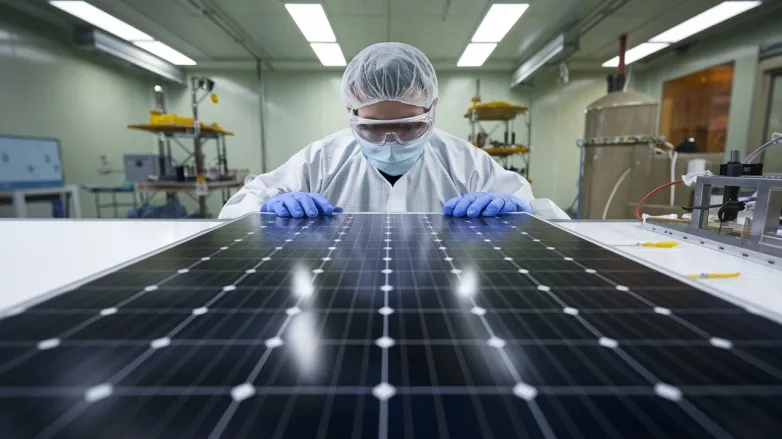Trina’s 841-W Tandem Panel Shakes Up SNEC 2025
- Trina Solar debuts an 841 W, 27.1 % perovskite-silicon tandem module at SNEC 2025, promising hotter-climate gains and edging closer to 30 % commercial efficiency.

Trina Solar used the bustle of Shanghai’s SNEC expo to show a prototype module that jolted even seasoned engineers: an 841-W, 27.1 %-efficient perovskite-silicon tandem panel built on the manufacturer’s familiar 210-mm wafer platform. According to the company, a new low-temperature interconnection scheme lifts optical capture and trims resistive losses, helping the panel push well beyond the 800-W ceiling set just three months earlier.
The gains are not limited to headline power. Trina says the prototype’s temperature coefficient—how quickly output sags on hot days—is roughly 20 % better than that of state-of-the-art heterojunction (HJT) modules, a metric that could translate into markedly higher yield in sun-baked markets from Arizona to Australia. While full electrical data remain under wraps, the company hinted that the design relies on bifacial perovskite top cells stacked over back-contacted polysilicon, stitched together at temperatures gentle enough to preserve the perovskite layer’s fragile chemistry.
The launch caps a furious run of lab milestones. In March, Trina’s National Key Lab sent an 808-W, 3.1-m² tandem panel to TÜV SÜD for third-party tests, marking the first industrial-size module to break the 800-W barrier. In April, engineers nudged a 210-mm industrial cell to 31.1 % efficiency, and days before SNEC they logged 30.6 % on a 1 185 cm² mini-module. These proofs of concept suggest the 841-W prototype may not be a one-off stunt but a waypoint on a roadmap toward 30 %+ commercial modules by decade’s end.
Commercial timing is still fuzzy. Trina’s R&D chief told pv magazine that scale-up hinges on stabilising perovskite layers for a 25-year warranty and aligning production temperatures with existing 210-mm tooling. Yet investors are watching closely: a 27 %-efficient panel could shrink balance-of-system costs by squeezing more watts onto each tracker row, and the gentler temperature curve would lessen clipping losses inside big batteries.
For now, the prototype is a statement of intent—and a reminder that the race beyond TOPCon and HJT is accelerating. If Trina can convert lab sparkle into gigawatt lines, utility buyers may soon weigh perovskite tandem premiums against land and steel they no longer need to buy.
Also read

